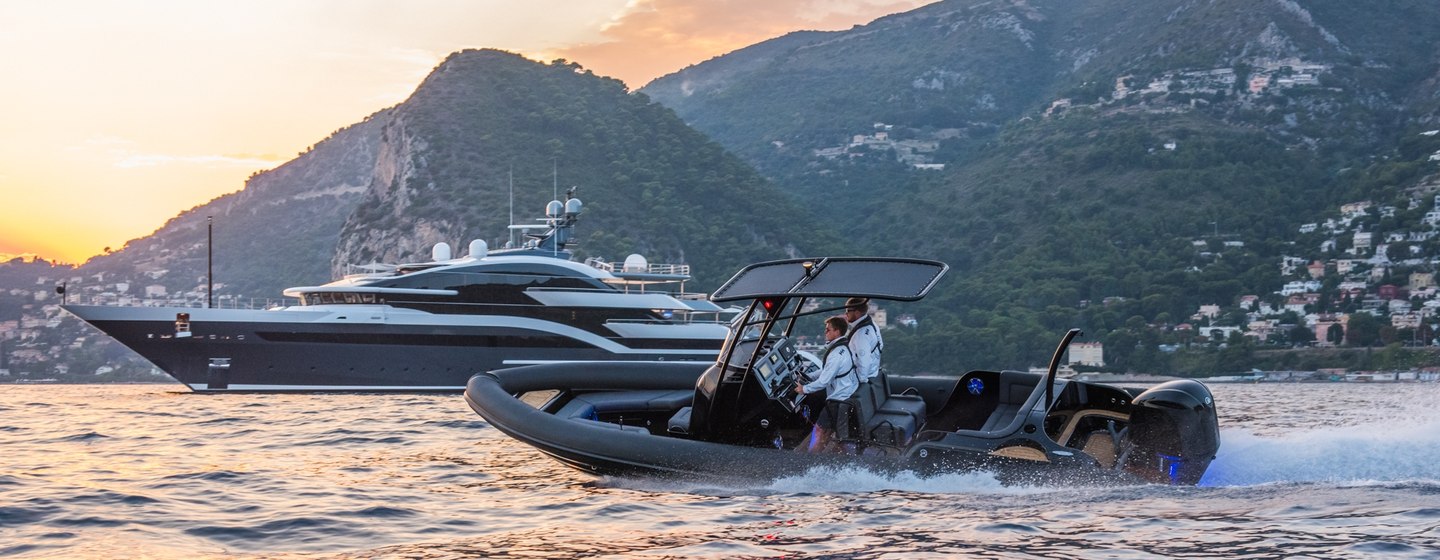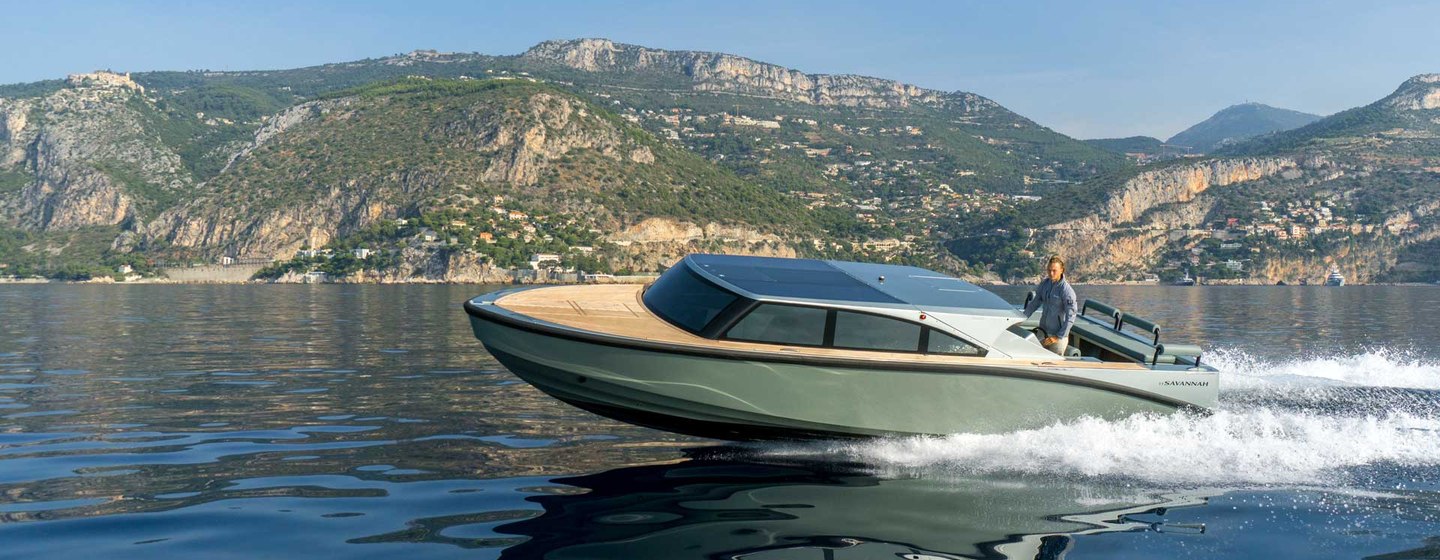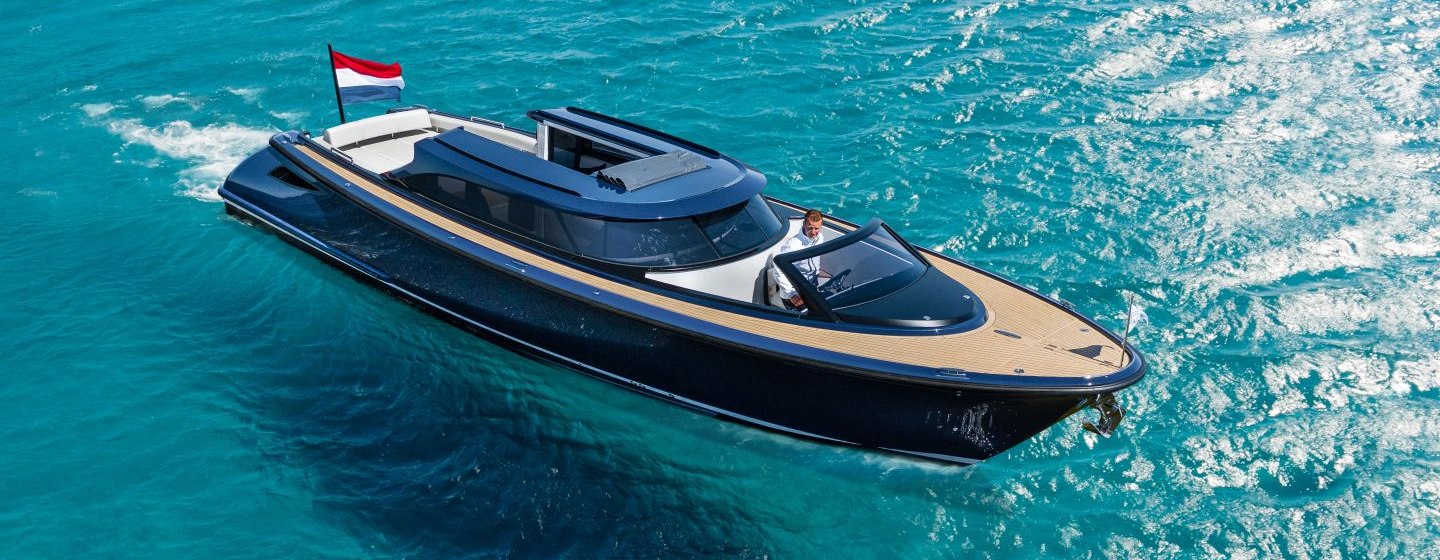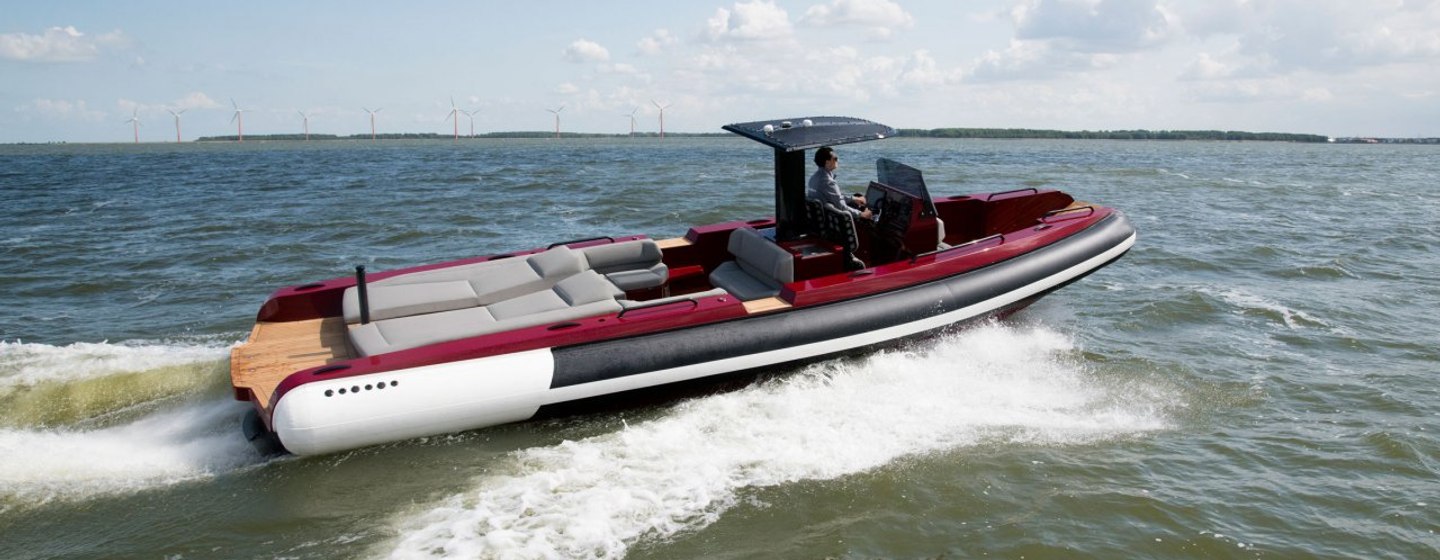If you’re looking for a new tender for sale, there is an array of different vessel types to choose from, ranging from versatile amphibious craft to the luxurious world of limousine tenders.
You can explore this market in the YachtBuyer Tender section, where a multitude of tender brands, ranges, and models are listed. But before diving headfirst into this exciting marketplace, here’s a breakdown of the main tender designs and types on offer.
The Tender Revolution
Yacht tenders have come a long way since the days of rubber dinghies and wooden skiffs, with a vast selection of designs, sizes, and specifications now available.
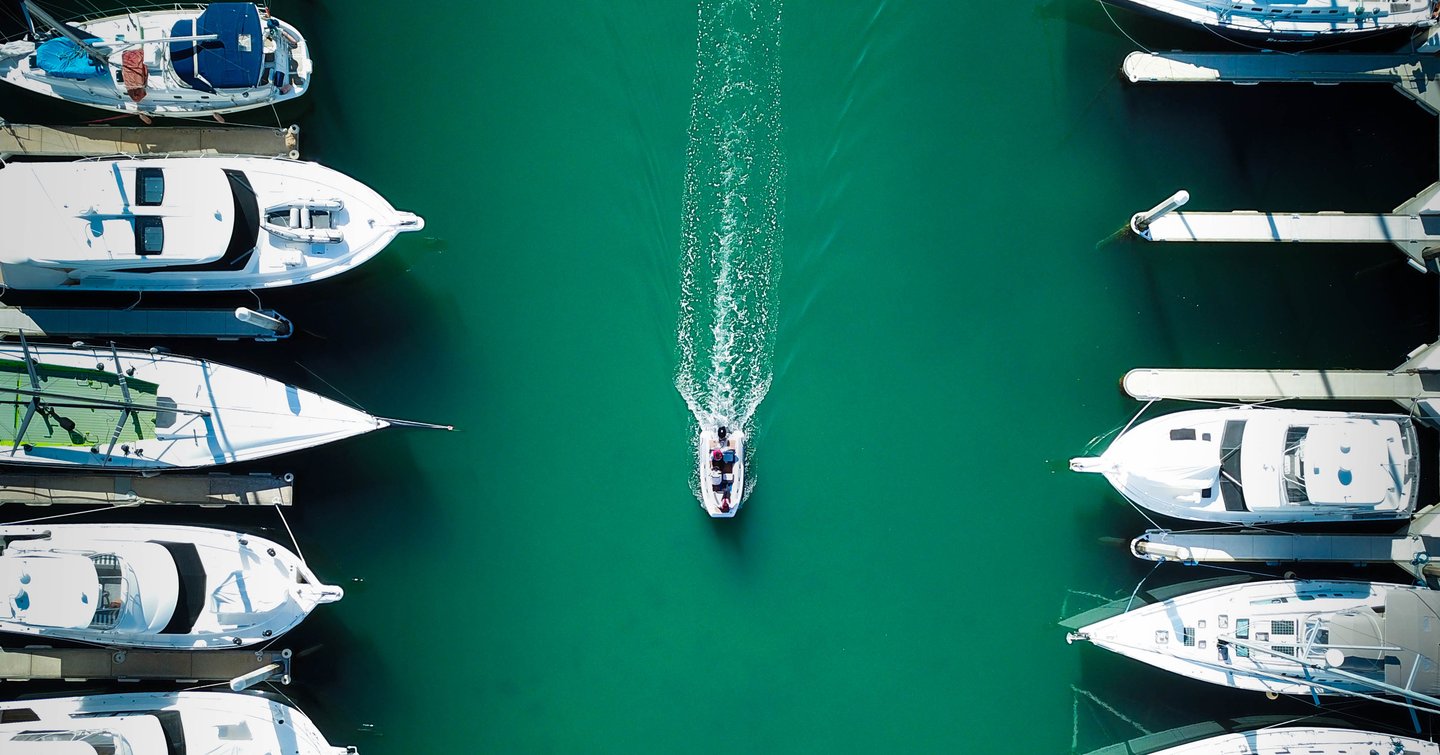
The RIB (Rigid Inflatable Boat) is one of the reasons tenders have evolved into such exciting yacht accessories, offering safe, practical transport and fun for their users.
Fuelled by the RIB revolution, the tender market now offers everything from amphibious craft and beachlanders to fully air-conditioned limousine vessels.
Choosing the Right Tender
Undecided on which tender is best for you? Then read our guide on how to choose the right tender, which covers why you need one, their different uses, and the various types of launch and recovery systems.
RIB
The undisputed champion of tenders, the RIB, offers almost unbeatable practicality, functionality, and fun. A RIB's inflatable tubes offer excellent stability when stationary and also act as large fenders; perfect for pulling up to and alongside the mothership or a jetty.
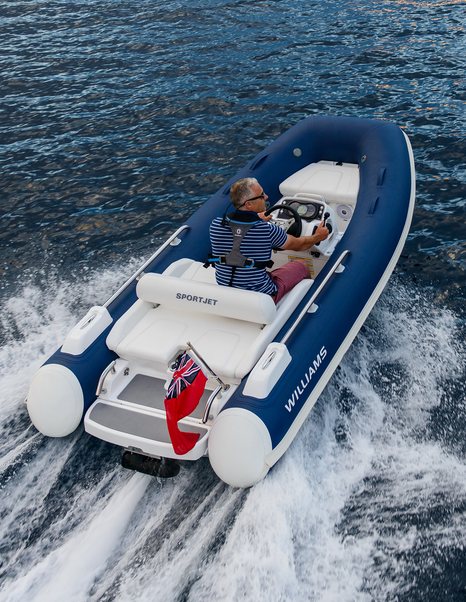

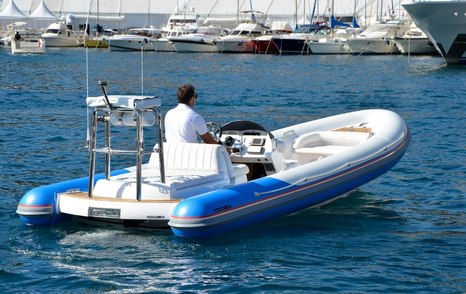
The tender type offers fast, reliable performance, and with a modular design on RIBs over 5m, can deliver various deck layouts and seating options. Another advantage of the RIB is that it can be used as a watersports platform, with swimmers or divers able to access or leave the water easily.
Smaller models under 7m (23ft) will predominantly be powered by outboard-engine, although a growing section of jet RIBs are becoming available. RIBs above 7m are usually equipped with inboard engines running on sterndrives.
If you are thinking of buying a RIB, click here to see what's for sale.
More about yacht & tender propulsion systems
Performance note
Despite a RIB's design deriving from tough, capable workboats, not all are built equal. As RIB popularity has increased, so has the number of manufacturers and models on offer. As a result, the marketplace is now extremely diverse, ranging from cheaper, entry-level leisure boats to highly specialized adventure craft.
Pros
- Highly versatile
- Easy to use
- Wide range of propulsion options
Cons
- Limited shelter
- Minimal storage space
- Not as comfortable as other options
Market overview
- Typical size: 2m - 15m
- Propulsion: outboard, inboard, jet
Beachlander
A relatively new addition to the tender market, beachlanders have an opening bow section to facilitate easy access to the shore. The superyacht-level craft ranges from guest-focused models — often based on a traditional RIB design — to more utilitarian landing craft-style boats.
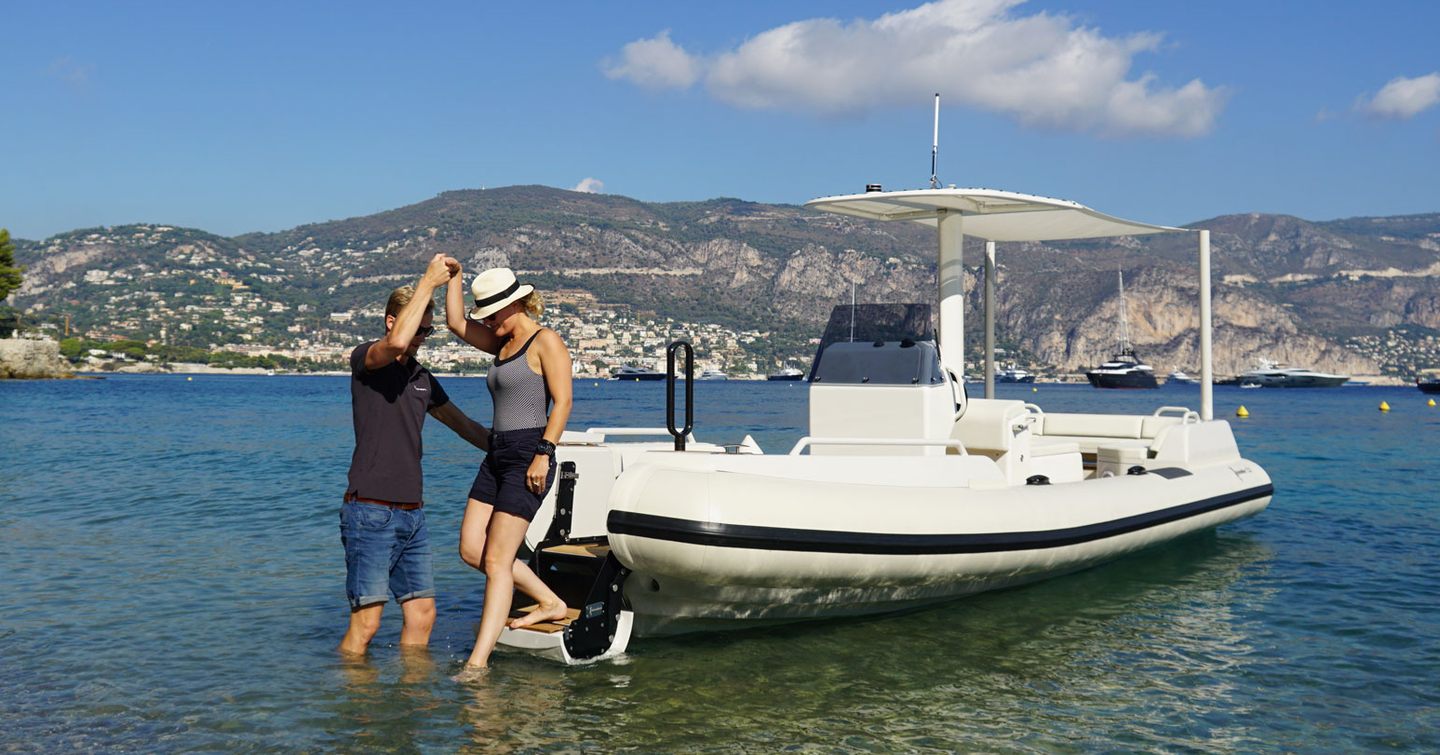
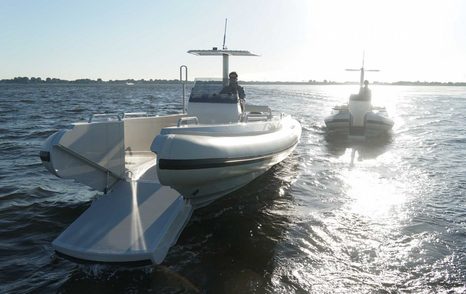
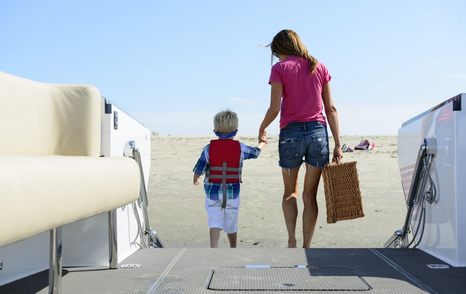
The leisure-focused beachlanders that follow RIB design are capable of carrying out most of the same operations but benefit from the additional, opening bow feature. The interior layout is also similar to a RIB, with a center console and seating for users.
The utilitarian models, however, are sparse in terms of onboard equipment and are designed to get supplies and even vehicles ashore. This makes them an ideal option for explorer yachts.
Smaller beachlanders will be outboard or jet-powered, with larger models often using inboard engines with sterndrives or jets to enhance shallow water performance.
Pros
- Great for adventure activities
- Easy access and exit for users
- A good all-round tender
Cons
- Complicated design elements
- Additional responsibility for crew
- Lack of cover for users
Market overview
- Typical size: 6m - 12m
- Propulsion: outboard, inboard, jet
Limousine Tender
The production of superyachts saw the emergence of luxurious guest shuttles called limousine tenders. Smaller vessels of this type can be open, but the limousine concept really comes into its own when equipped with a fully enclosed, climate-controlled cabin. This enables guests to move from ship to shore with protection from the elements and maximum privacy.
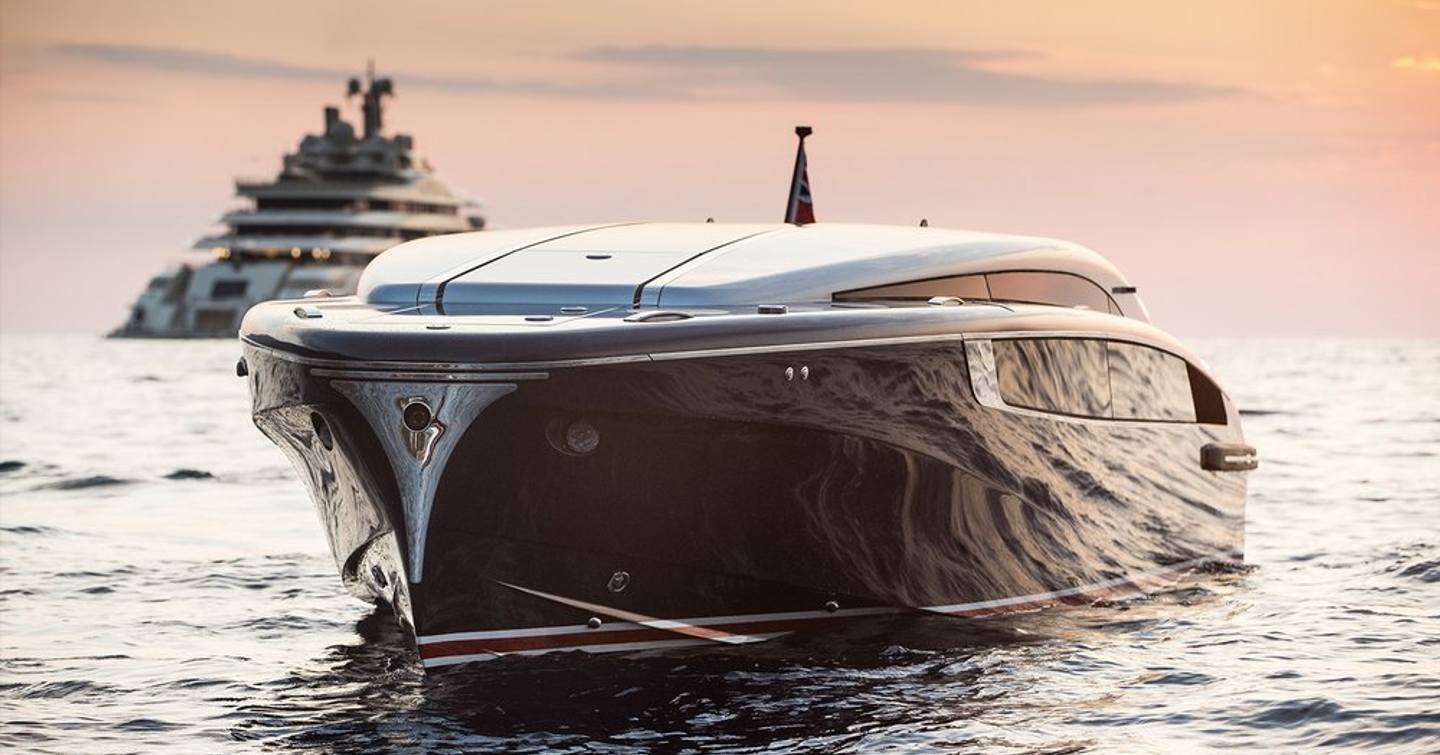
With a focus on guest comfort, the tenders offer a fast yet smooth ride, with powerful engines and a soft riding hull. The crew remains on deck during transit, ensuring users are uninterrupted.
The limousine tender draws its design inspiration from Venetian water taxis and admiralty launches and is often powered by inboard motors with a sterndrive or jet propulsion system.
Pros
- Specialist superyacht tender
- Perfect for yacht charter clients
- All-weather capability
Cons
- Expensive
- Often fully enclosed
- Less versatile
Market overview
- Typical size: 6m - 15m
- Propulsion: inboard, jet
Open Tender
Smaller yachts — such as those under 30m — might require a more specialist tender, while larger yachts can utilize a range of different boats.

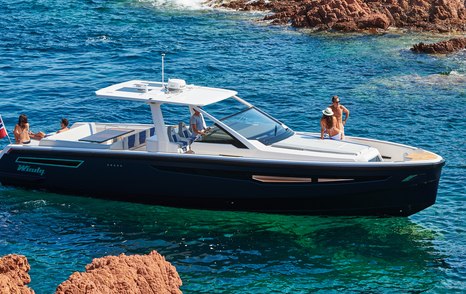

Such vessels include open boats like sportsboats or bowriders among others. While some of these will be ready for use as tenders, others may require modifications. Don't let this put you off though, as boat builders are often happy to cater to a host of requirements to enable their brand to enter the superyacht tender market.
Depending on the size and type of the open boat you choose, an overnight cabin and toilet may feature onboard, and can be used as an additional room alongside the mothership or for day trips.
Power will be delivered via an outboard or inboard motor, possibly with pod drives to offer joystick control and enhanced maneuverability.
Pros
- Variety of designs and sizes
- Wide performance ranges
- Optional cabin and toilet compartments
Cons
- Only suitable for larger yachts
- Little protection from the elements on deck
- Modifications may be required
Market overview
- Typical size: 7m - 15m
- Propulsion: outboard, inboard, jet, pod drive
Classic Tender
Timeless design, a high-quality build, and cutting-edge technology — what's not to like? Delivering superb performance, classic tenders are a great option for those who desire sophistication and style.
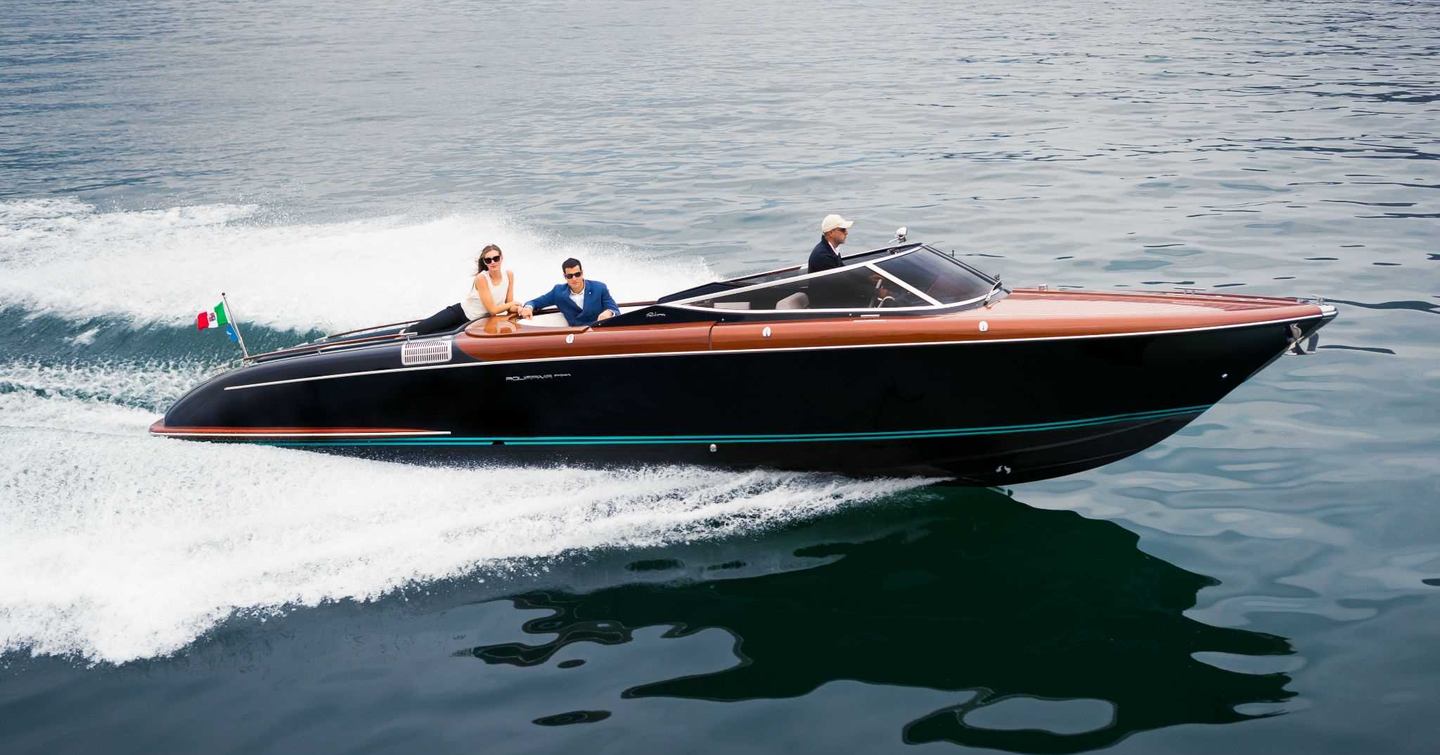
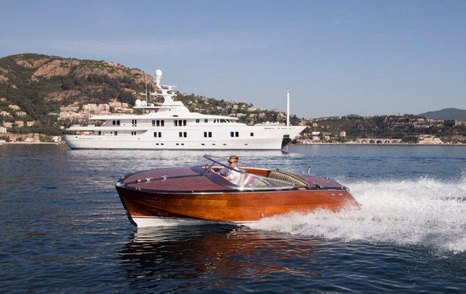
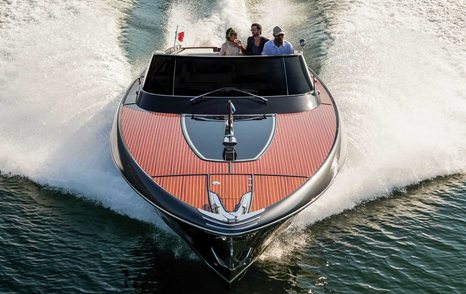
Aimed at the large yacht and superyacht market, the classic-style vessels are often designed for use as tenders, so come ready for action with a wide variety of impressive interior and exterior finishes, and propulsion options.
Looking good does, however, come with a compromise, as the classic tender often features less space on deck than some of its more practical counterparts.
Pros
- Timeless design
- Excellent build quality
- High level of performance
Cons
- Premium price
- Lack of shelter for users
- Less storage compared to other tenders
Market overview
- Typical size: 7m - 15m
- Propulsion: Outboard, inboard, jet
Chase Boat
For those requiring a larger, more capable craft that can operate separately from the mothership, chase boats are a great option. These vessels can be utilized to scope out ports and anchorages, collect guests, or be used as standalone vessels for day trips.
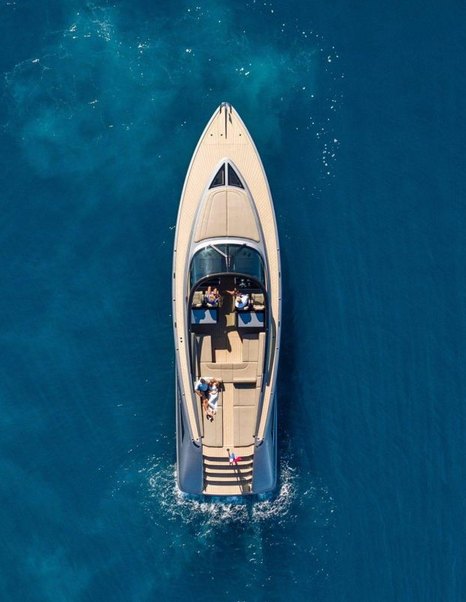
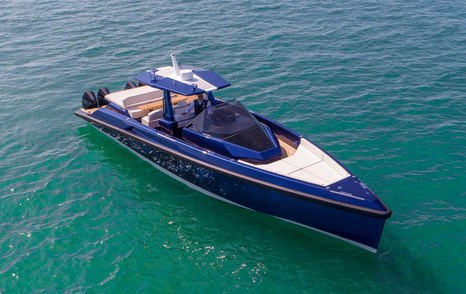
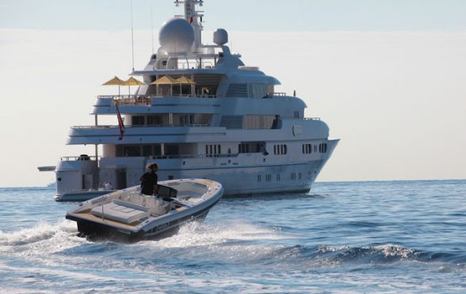
Due to their size, chase boats are often used in combination with larger motherships which have the capacity to tow them. The vessels can, however, be used by smaller superyachts and will be moored separately when not required.
Pros
- Larger size increases space and capability
- Can be used as a standalone vessel
- Leaves decks or garages clear for other uses
Cons
- Requires a dedicated crew
- Must be towed or run alongside the mothership
- Lack of shelter for users
Market overview
- Typical size: 7m - 20m
- Propulsion: inboard, jet
Amphibious Tender
A fast, smart tender that can also operate on land? Amphibious tenders differ greatly in terms of their design, with on-land capability provided by wheels or caterpillar tracks to enable movement onto a beach or slipway.
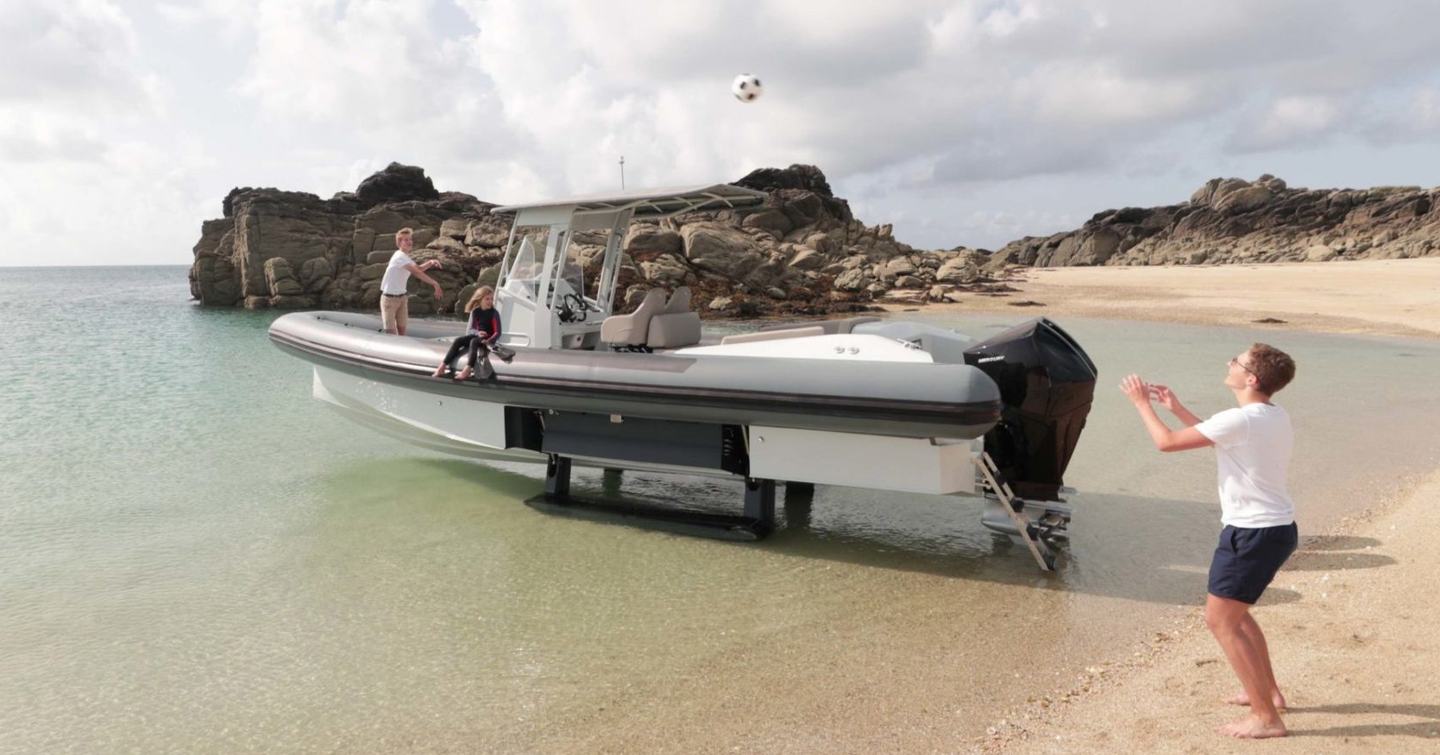
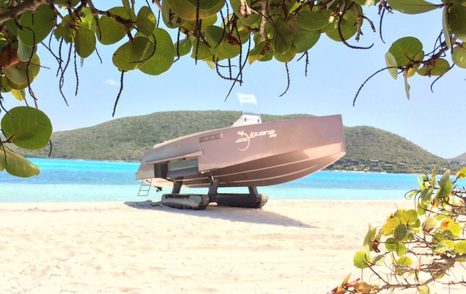
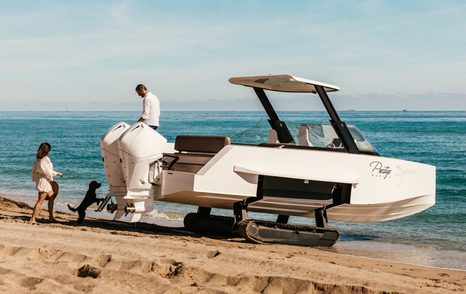
The amphibious vessel has many advantages, such as enabling you and your guests to reach land without getting your feet wet. The design also means that tides or securing the tender is no longer an issue. Whether you’re headed for a beach barbecue, exploring an inlet or bay, or pulling up to a dock for lunch, this is an extremely practical tender option.
The vessel's design is normally conventional, with RIB or open boat with a center console being used as the basic platform. It is the method of driving on land, however, that differs greatly between amphibious tenders.
Some craft will utilize a simple set of wheels to drive onto slipways, but these offer limited grip and maneuverability. To increase performance and capability, caterpillar tracks are fitted to other amphibious vessels, enabling them to access uneven shingle or sandy beaches and also slipways.
Pros
- Ability to access land
- Little on-water compromise
- Enables a wide range of exploration options
Cons
- More components to maintain
- Can be more expensive than other tender options
- On land ability varies greatly between models
Market overview
- Typical size: 7m - 12m
- Propulsion: outboard
Typical Tender Sizes and Capacities by Mothership LOA
The maximum size of a tender will be governed by the size of the mothership, in terms of how and where it will be stowed.
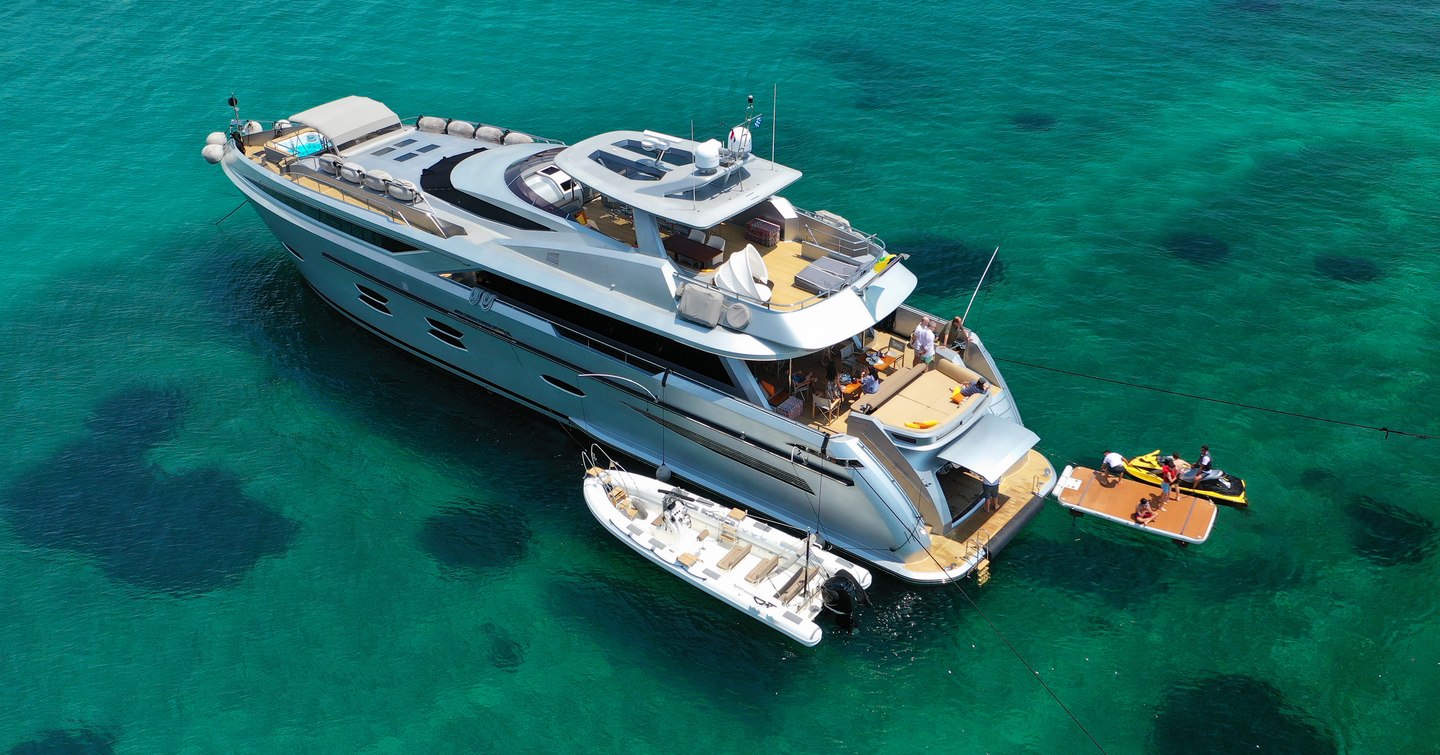
The chart below can be used as a guide when figuring out what size tender best suits your yacht. That being said, there are many other contributing factors — such as tender garages — that can limit the size of a tender.
| Mothership LOA | Tender Size | Persons |
|---|---|---|
| 10m - 12m | 2.5m | 2 |
| 12m - 15m | 2.5 - 3.5m | 3 - 4 |
| 15m - 20m | 3.0 - 3.5m | 3 - 4 |
| 20m - 30m | 3.5 - 5.0m | 4 - 6 |
| 30m - 40m | 4.0 - 6.5m | 4 - 8 |
| 40m - 50m | 5.0 - 7.0m | 6 - 10 |
